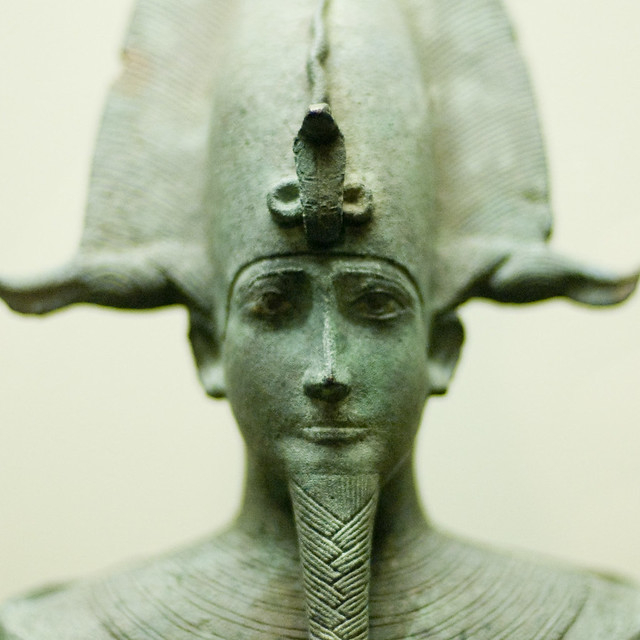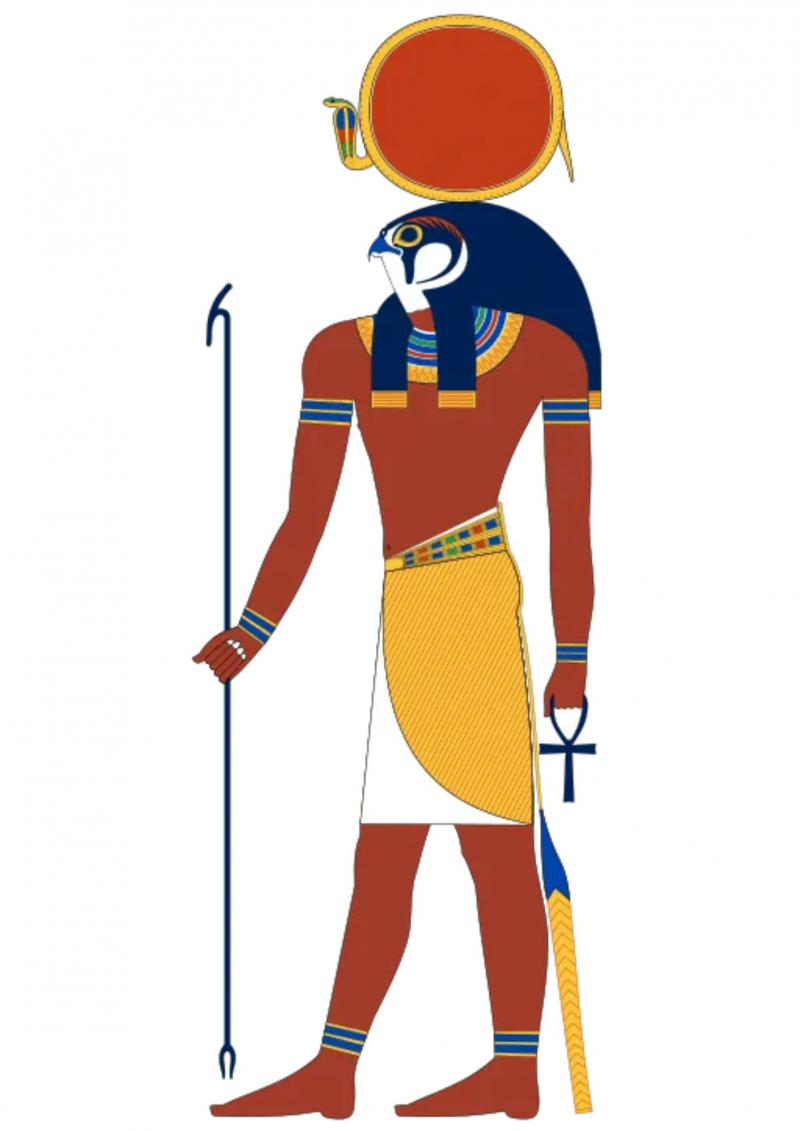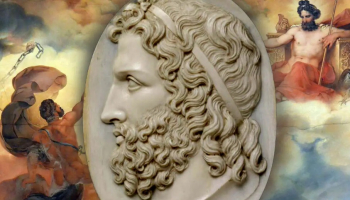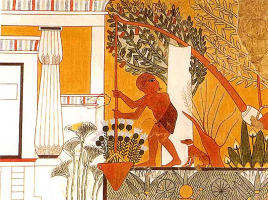Top 10 Most Worshipped Ancient Egyptian Gods
Egypt's ancient culture includes a wealth of information, some of which is still classified, and this vast country on the banks of the Nile has made an ... read more...appearance in both ancient and modern history. The pharaoh served as the ultimate authority in terms of religious rites and ceremonies around 3100 BC, following the political union of Upper and Lower Egypt. Egyptian deities were venerated and people were careful not to offend them because they were thought to symbolize various aspects of nature. So what guises did these gods adopt? Let’s take a look at the most worshiped gods and goddesses of ancient Egypt. The list that follows, however, is not all-inclusive and is not arranged in any particular order.
-
Amun-Ra or Amon, the Supreme Creator God, was most likely worshipped from the predynastic era to the end of the Egyptian period, roughly 400 AD. His cult's focal points were dispersed across Karnak and even outside of Egyptian territory. Amun-Ra was created when he fused with the solar god Ra.
Amun is the sun god, ruler of the sky, and ruler of Egypt. He is thought to be a primordial deity that existed in the chaos during the birth of the universe and was one of the eight Ogdoad gods, along with the goddess Amunet, who stood for concealed strength.
His female counterpart, Amunet, was referred to as the Female Hidden One, and he was believed to be the father of the pharaohs. Along with Mut and their son Khonsu (The Moon God), Amun-Ra was a member of the so-called "Theban Triad," which was highly revered in ancient Egypt.
He is depicted as a pharaoh with blue skin, a modius (turban), and two large plumes of feathers on top, signifying his rule over both Upper and Lower Egypt.
He is represented by a ram with curled horns who reveres the Nile goose. He is a divinity who is thought to be unseen but omnipresent, hidden but expanding over the cosmos. The best anthropomorphic description is "hidden of aspect, cryptic in form" in hymns. (Ra-Light; Amun-Hidden)He gained prominence and the title of "King of the Gods" in the New Kingdom when he was identified as the former sun deity of Heliopolis. He was venerated as a snake god in Thebes, where the snake symbolized immortality and perpetual rebirth. He was equated with Zeus during the early Greek civilizations.

Amun - Wikipedia 
Dennis Jarvis/Flickr -
Mut, which translates to "mother" in Egyptian, is a primordial goddess who wears two crowns on her head, one for Upper Egypt and the other for Lower Egypt.
As the other half of the sun god Amun and the mother of Khonsu, the moon deity, she took the place of the goddess Amaunet. She was revered as the cosmic mother by the Theban rulers. Amun merged with Hathor, the mother of Horus, to become Amun-Ra (wife of Ra). As a result, she gained the moniker "The Eye of Ra," guarding the deity on his ascent through the heavens. She eventually became a part of Ennead.
Mut was shown as a woman wearing a vulture headdress with the crowns of both Upper and Lower Egypt on its top. She appears to be wearing a red or blue outfit. She occasionally appeared with the head of a cobra or lioness.
For more than 2000 years, the religious center was Iseru, her sanctuary at Thebes. She finished the Triad of Waset along with Amun and their kid, Khonsu.She was referred to as the mother of the universe and came from the Nile delta. She was connected to numerous gods and goddesses and was well known as the goddess of creation. therefore depicted as a hybrid god. She is therefore sometimes referred to as the World Mother and the Lady of Heaven. The very word "Mut" connotes mother.

Mut wearing the double crown and a royal vulture headdress - Wikimedia Common 
Freepik -
Osiris is the Egyptian God of Corn and Vegetation as well as the Goddess of the Underworld. From about 3000 BC to the end of Egyptian history, about 400 AD, he was worshipped.
One of the most respected and worshipped gods in the Egyptian pantheon is Osiris. He was born at Rosetau in the necropolis (portal to the afterlife) of Memphis, according to the genealogy at Heliopolis. He was the oldest of four children and the son of the sky goddess Nut and the ground god Zeb.
The lush flooding and flora along the banks of the Nile were attributed to Osiris, the deity of vegetation, which stood for renewal and growth. Osiris was assassinated by his brother Seth after marrying his own sister Isis. Osiris was killed by his own brother, but thanks to Isis's sorcery, he was resurrected in order to father a child. The son of Osiris and Isis, Horus, avenged the death of his father and ascended to power as a new Pharoah of Egypt, while Osiris transformed into the god of the underworld and helped with both the pharaohs' and the people's afterlives.
Osiris is shown as a body draped in linen when he is in human form. He has free arms like a mummy and is holding a crook and a flail in each hand. His crown is an unusual Lower Egyptian conical crown made of white. His complexion is green, and he is regarded as the solar deity Ra's deathly antithesis.
Osiris was revered as the grain god and represented by a sack of sprouting green seeds. He is also represented by models with articulated members, which ladies would control and parade through the streets during celebrations to show off the god's vigor. It was essential that he had good contacts with the Egyptian royal family. Each king was Osiris in life and the divine representation of Horus after death.
During the Hellenic era of ancient Greece, Osiris appears to have subsequently amalgamated with Dionysus.
Some people think Osiris may have served as inspiration for some of Jesus Christ's life in Christian mythology due to his death and resurrection as well as other aspects of his story.
Osiris, depicted with green skin symbolizing rebirth - Wikimedia Common 
Shawn Kelly/Flickr -
One of the Egyptian pantheon's most recognizable and well-known deities is undoubtedly Anubis. Anubis, the jackal-headed deity, guarded the entrances to the underworld. Anubis governed the underworld prior to Osiris taking control. Anubis was the son of Ra and Nephthys and a "psychopomp," or god who helps the dead, in the afterlife. He had a reputation for mummifying the deceased and directing their souls to the afterlife.
His dark skin served as a metaphor for the deep Nile deposits that made the region so productive. Anubis also represented the Renaissance and the dyeing of dead bodies after embalming, having a jackal's head and a human body.
Being originally a deity of death and the afterlife, he was closely related to the practice of mummifying the deceased before burial. Because jackals have a propensity to dig up and consume buried dead whenever and wherever they can find them, it is widely accepted that he is associated with them.
Anubis is renowned for his role in determining the afterlife fate of the deceased. He measured their heart against the "feather of truth" to determine whether they were worthy of the afterlife. If they failed the test, Ammit, another Egyptian deity, would devour them both heart and soul.Anubis used to oversee the after-death preparations for the elite, including embalming and linen bandaging of the monarch and his courtiers. The use of black tar to seal the body with linen bindings caused his coat to turn black over time.
His emblem depicts a headless figure covered in blood, wearing animal skin. His primary cemeteries were located along the Nile's banks, and one of them has the phrase He Who is Upon the Mountain. It suggests that Anubis is present above the mountains, where he keeps watching over them.
Anubis, the god of mummification, the afterlife, cemeteries, and, the Underworld - Wikimedia Common 
Ricardo Liberato/Flickr -
Some of Ra's most popular titles include God of the Sun, King of Gods, and Mortals. Re, Amun-Re, Khepri, and other names are also used to refer to him depending on his various forms of existence. He frequently included other Egyptian gods. It's unclear how he came to be; some claim he created himself, while others claim he was the result of the union of two other gods.
They are collectively referred to as the Ennead of Heliopolis, with Ra serving as the chief deity and being known as Ra-Horakte. Ra, on the other hand, was the godhead in the Egyptian pantheon and the universe's highest force. The attributes of Ra were all the other deities. Other gods, specifically, were his offspring.
He traveled on a golden chariot as the God of the Sun, bringing warmth and light to the people of Earth. He gave the inhabitants of the underworld freshness even when the sun had set. He is frequently compared to the Phoenix because of his propensity to get up every morning and fall asleep at night. Every sunrise and every sunset were considered to be stages of rebirth.
He is depicted in ancient art as having a falcon head with a solar disk on his head. Heliopolis served as the main Ra's cult center (city of the sun). From the seventh dynasty (about 2400 BC), he rose to the position of divinity and later merged with the Theban god Amun.
Ra, the god of the sun, with the head of a falcon and the sun-disk - Wikimedia Common See U in History / Mythology -
In ancient Egypt, Horus was a particularly remarkable divinity. The son of Osiris and Isis, Horus, was said to have ruled Egypt after exacting revenge for his father's murder. The sky was also ruled by Horus. From about 3000 BC until the end of Egyptian history, he was revered.
He is one of the gods in the Egyptian pantheon whose importance has been attested since the beginning of written history. According to mythology, Horus was born at Khemmis in the Nile delta region. His mother was Isis, and according to a complicated family tree, he had three different names: Horus, Horus the child (Harpokrates), and Horus the Elder.
According to legend, he established himself as Egypt's first king following an eighty-year power war with his adversary and brother Seth. Horus lost one of his eyes in his bloody conflict with Seth, the brother of his deceased father; this eye would later become known as the "Eye of Horus" or Wadjet. Egyptian mythology states that the eye began to weep as the other gods tried to catch it, and the tears of the eye became the first inhabitants of Egypt. Even though his mother replaced the eye, the story became renowned folklore. The image can stand for the safety of royalty, perfection, and defense against Seth's wicked influence.
The falcon is the emblem of Horus, who is typically portrayed as either fully human or as a human with a falcon's head.

The Eye of Horus. - Simon G.B. Roberts/Flickr 
ancienthistorylists -
The first words and the concept of writing as a whole were conjured up by Thoth, the God of Knowledge and Wisdom. Additionally, he has created numerous knowledge branches. One of the mythical folktales holds that he came from Ra's lips, while another asserts that he made himself. Thoth served as a mediator in disputes between the forces of good and evil. Along with his counterpart Ma'at, a master of both natural and divine rules, he kept the universe in balance by calculations.
He takes on a human shape with the head of the sacred ibis, a bird of wisdom. The ancient Egyptian name Djehuti, which means "He Who Is Like The Ibis," was translated into Greek as Thoth. He is frequently depicted with an ankh and a scepter, but he is also occasionally portrayed with a palette and a stylus.
The author of "Book of the Dead" is Thoth. He was also the underworld's scribe. He stayed up late weighing the deceased people's hearts and sending the lighter ones up into the heavenly world.He was recognized by the ancient Egyptians as a scientist, philosopher, and magician. This deity with an ibis or baboon head was regarded as the most intelligent divinity in ancient times. Thoth is credited with creating the 365-day calendar and is also known as the moon god for keeping time even when the sun was not there. He was properly dubbed "The Reckoner of Time and Seasons" for keeping time and measuring it precisely.
For the Egyptians, who first believed Thoth to be the Moon God because the crescent moon represents the Ibis, a bird connected to Thoth, the waxing and waning of the moon played a significant role.The fact that Thoth wrote 42 volumes throughout his lifetime is interesting. He was given the title "Author of Every Book on Every Branch of Knowledge, Both Human and Divine" as a result.
In his works, he condensed all universal knowledge necessary for both mortal and immortal people. Some of them were so strong that no one could know about them.
Thoth as an ibis-headed man - Wikimedia Common 
ancienthistorylists -
The Egyptian Mother Goddess or Goddess of Love is Hathor. From the Old Kingdom (about 2700 BC) or earlier to the end of Egyptian history, she was worshiped (circa AD 400).
Hathor is said to have a kind disposition and be empowered by creative powers. She allegedly repaired what Sekhmet had ruined. As a result, she was always portrayed as a cow deity in one or more forms. She was referred to as "Lady of the Stars" for her heavenly abilities. She is frequently referred to as the mother of all Egyptian pharaohs and her father is the sun deity Ra.
She may be portrayed as a cow in works of art, as in the sculpture of her munching on papyrus leaves and nursing Amenhotep II from the Hathor shrine of Tuthmosis III, or in human form with hairstyles that resemble the Mesopotamian omega symbol.
She is occasionally associated with lions and is also seen in the capitals of architectural columns. The snake and the papyrus reed are other emblems. She was immensely well-liked in Greco-Roman society, and many aspects of Aphrodite were modeled after her.Hathor, also known as the Mistress of the West, ushered the dead into the afterlife. She represented maternity and female love because she was born of Ra. She was prayed to by the ancient Egyptians as the goddess of dancing and music.
She is regarded as a blessing since she assists pregnant and laboring women. She was also known as the Lady of Heaven, Earth, and the Underworld and was affectionate, modest, and kind to both the dead and the living.
Hathor’s most common iconography - Wikimedia Common 
Hathor: Goddess of Joy and Motherhood Near the Nile - Ancient Origins -
Sekhmet, the epitome of feminine strength, was endowed with numerous titles and distinguished by the fact that she always wore an item of scarlet clothing. Her name signifies that she is strong. She embodied the goddesses of the sun, chaos, healing, and war.
According to legend, Ra peered down at Earth and lit a fire in his eyes. Sekhmet was created by the spark that erupted.
Ra intended for her to slay anybody on Earth who defied him and broke Ma'at's rules. She is frequently seen in human form as a female with a lion's head and a sun disk.
Sekhmet is revered as a ferocious deity as well as a healer. She was able to heal victims of many maladies and even prevent them. Ra used her as a weapon to exact revenge.
She may therefore also unleash plagues. She was referred to as The Lady of Pestilence for the same reason. Egyptians (including pharaohs) prayed to her and presented offerings in an effort to be on her side.
Her nickname, "The One Before Whom Evil Trembles," captures her fierceness. She had a thirst for bloodshed because she was a goddess of war. It is reported that she once came close to eradicating Egypt's whole population and left behind a large bloody mess.She is represented by a female with a lioness head. She had the immortality-representing uraeus serpent and a sun disk on her head.
She frequently appeared naked or in very little clothing, which was rare for Egyptian deities. She holds a scepter in one hand and an ankh in the other.
Sekhmet depicted with the head of a lioness and a sun disk - Wikimedia Common 
The War Goddess of Ancient Egypt: Sekhmet the Bloodthirsty - TheCollector -
Geb, the god of Earth, is known by a variety of names, including Chief of Gods, The Great Cackler, and Father of the Gods. He was one of the nine beings known as the Ennead of Heliopolis, who came to Earth from the Sirius star system. Geb is a third-generation god and the child of Su and Tefnut. He is the brother of Nut's consort and the father of Isis and Osiris.
On papyri from the New Kingdom, he often wears the crown of Lower Egypt and is depicted lying on the ground with his arms outstretched, one to the sky and the other to the ground.
He stands out because he is green and has vegetation sprouting from him. He possesses healing abilities, especially against scorpion stings.
He is both a mediator between good and evil and a god concerned with the conflict between Horus and Seth.
Geb, who was also known as the Father of Snakes, stood for healing and harvests. This bearded god, who wore a goose on his head, was said to chuckle and make earthquakes. He had a significant part in the Book of the Dead as the person who measures the dead's hearts in Osiris' Judgment Hall. The prehistoric Egyptians thought he kept the souls of the evil.
Geb, the Egyptian god of the Earth and a member of the Ennead - Wikimedia Common 
Mythology Source































